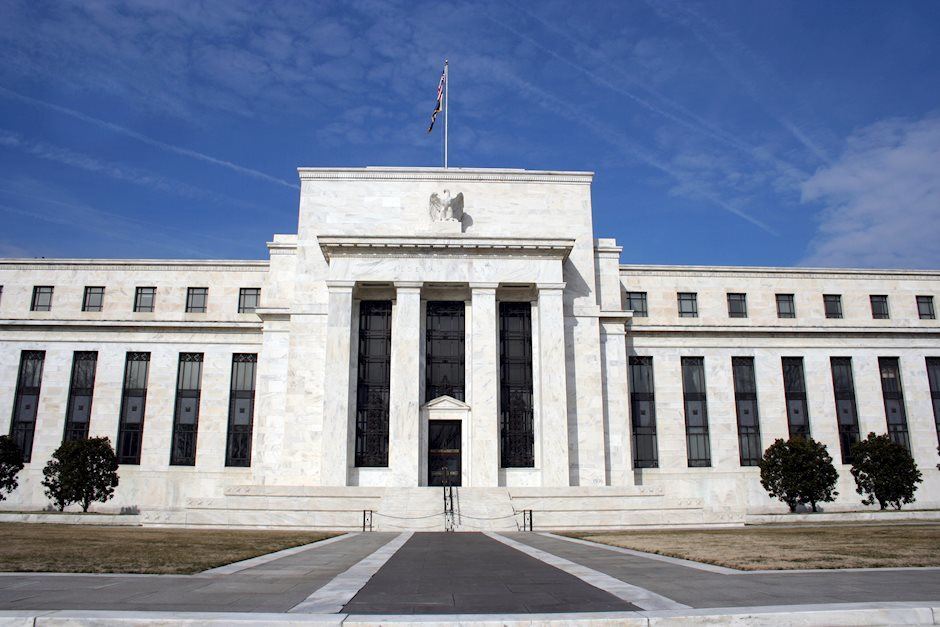Federal Reserve losses top $200 billion and you're on the hook

Federal Reserve losses have eclipsed $200 billion as the central bank continues to bleed red ink.
Oh, and by the way, you – the taxpayer – are ultimately on the hook.
According to the latest data from the central bank, the Fed has now lost $201.2 billion over the last two years.
The Fed’s losses are a direct result of its rate hikes, and its financial condition offers a glimpse behind the curtain into the unseen consequences of its war on price inflation.
The Federal Reserve assures us that these massive paper losses don’t have any effect on its operation and won’t hinder its monetary policy.
That’s because the central bank gets the privilege of operating under rules that no normal business would ever enjoy.
How did the world’s premier central bank lose over $200 billion?
Why has the Federal Reserve lost so much money?
In simplest terms, the bank has paid more interest to banks than it has collected on its asset portfolio. This is the direct result of the higher interest rate environment the Fed conjured up in its efforts to tamp down the inflation it created it created after the 2008 financial crisis and during the pandemic.
While most people view central banks as an extension of the government, at their core, they are a business, and they are set up to make money.
The Fed earns interest income on the bonds it buys and holds on its balance sheet, and it pays interest to banks and financial institutions that park money there.
The problem today is that the bonds the Fed purchased during multiple rounds of quantitative easing (QE) in the aftermath of the financial 2008 crisis and during the pandemic years were relatively low-yielding. The Fed purchased them at a time when interest rates were pushed artificially low by its own monetary policy. Having driven interest rates much higher over the last two years, it is paying interest to banks and money funds that park rates at the Fed a much higher rate. However, it is still collecting lower rates of interest on the paper on its balance sheet.
The St. Louis Fed explained it this way:
“Tightening causes the net interest rate spread to fall; that is, it causes net income to fall for a constant size of the Fed’s balance sheet. This occurs because the Fed runs a maturity mismatch: It owns long-term securities and owes short-term liabilities.
“Specifically, when the Fed raises the policy rate, it is immediately paying more interest on bank reserves and reverse repos—a large portion of the Fed’s liabilities: 42.5 percent and 17.0 percent, respectively, as of Nov. 8, 2023. However, the Fed’s assets are longer-term and often pay a fixed interest rate. Therefore, when the Fed raises the policy rate, its net interest rate spread falls.”
It’s also interesting to note that, like many commercial banks, the Fed has substantial unrealized losses. If you mark all the bonds held by the Fed to market value, the loss on paper is over $1 trillion. That’s more around 23 times the value of the central bank’s stated capital.
Many commercial banks face a similar situation. In fact, this phenomenon was the root of the mini-financial crisis back in March 2022.
WolfStreet offered a good explanation of how banks got into this situation:
“During the pandemic money-printing era, banks, flush with cash from depositors, loaded up on securities to put this cash to work, and they loaded up primarily on longer-term securities because they still had a yield visibly above zero, unlike short-term Treasury bills which were yielding zero or close to zero and sometimes below zero at the time. During that time, banks’ securities holdings soared by $2.5 trillion, or by 57 percent, to $6.2 trillion at the peak in Q1 2022.”
In other words, the Federal Reserve incentivized the bond-buying spree.
With the Fed keeping interest rates artificially low for more than a decade in the wake of the 2008 financial crisis and slamming rates to zero again during the pandemic, most people just assumed the era of easy money would never end.
But what the Fed giveth, the Fed taketh away.
The easy money had to end when price inflation reared its ugly head thanks to the stimulus mania during the pandemic, and the Fed could no longer plausibly claim it was “transitory.”
Conventional wisdom tells us unrealized losses aren’t a big deal. They only become actual losses if banks try to sell the bonds. If they hold the bonds to maturity, they won’t lose a dime.
But there is no guarantee that things will play out that way, as we saw when four banks, including Silicon Valley Bank, went under.
As WolfStreet put it, “Unrealized losses don’t matter until they suddenly do.”
“In reality, they [unrealized losses] matter a lot, as we saw with the above four banks after depositors figured out what’s on their balance sheets and yanked their money out, which forced the banks to try to sell those securities, which would have forced them to take those losses, at which point there wasn’t enough capital to absorb the losses, and the banks collapsed.”
This is exactly what happened to Silicon Valley Bank. The bank needed cash. The plan was to sell the longer-term, lower-interest-rate bonds and reinvest the money into shorter-duration bonds with a higher yield. Instead, the sale dented the bank’s balance sheet with a $1.8 billion loss, driving worried depositors to pull funds out of the bank.
The Fed managed to paper over the problem with a bailout program, but unrealized losses are still sloshing around under the surface. Who knows if or when it will matter again?
Fed losses? So what?
But when it comes to the Fed, unrealized losses don’t matter – at least not to the central bankers running the show.
Generally, businesses experience pain when they lose money. But when the Federal Reserve loses money, the U.S. government feels the pain.
And that means you will ultimately feel the pain because you (the taxpayer) are going to foot the bill.
Under the Federal Reserve charter, the central bank remits net operating profits to the U.S. Treasury. This serves as an income source for the federal government and lowers the budget deficit. According to the St. Louis Fed, the central bank returned nearly $1 trillion to the U.S. Treasury between 2011 and 2021.
But when the Fed loses money, the Treasury loses its payday. That results in even bigger budget deficits.
And who pays for federal budget deficits?
Taxpayers.
Bigger deficits mean Congress either has to raise taxes to cover the shortfall or the Treasury has to borrow even more money. Either way, taxpayers pay. They either get a bigger tax bill, or they pay for the borrowing via the inflation tax when the Fed prints money to monetize the debt.
Meanwhile, it’s business as usual over at the Eccles Building.
Typically, managers have to take drastic measures when their companies suffer big losses. They generally try to slash costs. Sometimes, they lay off employees. If losses mount high enough, they might have to borrow money or sell assets. If they can’t stop the business from bleeding red ink, the company will ultimately face bankruptcy.
When the Fed loses money, the central bankers don’t have to do anything other than some creative accounting.
Their rules aren’t your rules!
As George Orwell put it in Animal Farm, “All animals are equal, but some are more equal than others.”
And in the U.S., central banks get to play by different rules.
We live in a universe where the Fed gets to make its own special accounting rules, and according to its own special accounting rules, a net loss magically transforms into a “deferred asset.”
You read that right. Losses become an “asset” on the Fed’s balance sheet.
The Fed explains the “deferred asset” like this:
“[I]n the unlikely scenario in which realized losses were sufficiently large enough to result in an overall net income loss for the Reserve Banks, the Federal Reserve would still meet its financial obligations to cover operating expenses. In that case, remittances to the Treasury would be suspended, and a deferred asset would be recorded on the Federal Reserve’s balance sheet.”
Under Generally Accepted Accounting Principles, operating losses reduce a business’s reported capital or surplus. But in Fed accounting, the central bank gets to create an “asset” on its balance sheet out of thin air equal to the loss. Business goes on as usual. If losses mount, the size of this “asset” grows.
In an article published by the Mises Wire last year, Alex Pollock noted that without this accounting trick, the Fed would have negative capital.
Here are the combined Fed’s correct capital accounts as of June 30, based on Generally Accepted Accounting Principles. They result in a capital of negative $32 billion:
Paid-in capital $36 billion
Retained earnings ($68 billion)
Total capital ($32 billion)
As The Hill reported, “Among other things, this accounting ‘innovation’ ensures that the Fed can keep paying dividends on its stock.”
Don’t you wish the IRS would let you use “innovative” accounting on your tax returns?
This “differed asset” has no upper limit. The Fed can keep losing money into perpetuity, and it won’t matter – at least as far as the central bank is concerned. The "asset" will just continue to grow.
Once the Fed starts making money again, it will reduce the amount of this imaginary asset. That means the U.S. Treasury won’t see another dime from the Fed until this “asset” is zeroed out.
How long will it be before the Fed starts making money again?
That remains unclear.
According to an analysis by the St. Louis Fed in November 2023, it won’t likely occur until 2027. An independent analyst told Reuters the life of this mythical “deferred asset” could extend into 2028.
This means as long as the Fed continues to lose money and during the time it pays down its “deferred asset,” the federal government will experience a reduction in revenue, resulting in budget deficits higher than they otherwise would have been.
A revenue cut is less than ideal when Uncle Sam is already buried in over $35 trillion in debt and continues to run massive budget deficits every single month. It means the U.S. government will have to borrow even more money that the Fed will ultimately have to monetize.
And it’s less than ideal for the U.S. taxpayer how will ultimately foot the bill for higher interest expense and the price inflation created as the Fed ultimately monetizes the debt.
To receive free commentary and analysis on the gold and silver markets, click here to be added to the Money Metals news service.
Author

Mike Maharrey
Money Metals Exchange
Mike Maharrey is a journalist and market analyst for MoneyMetals.com with over a decade of experience in precious metals. He holds a BS in accounting from the University of Kentucky and a BA in journalism from the University of South Florida.

















